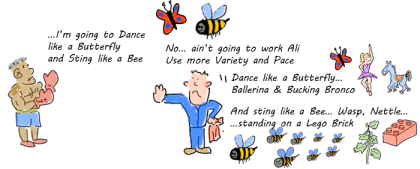
Defining Motivational Pace for Learning
MPhil Research, Cambridge University 2023

At the heart of AIU is the concept of viral-learning (or Guerrilla Learning) driven by a motivated user base.
Unfortunately, most educators and learning programs believe that learner motivation is the repsonsibility of the learner,
which is why up to 70% of students don't finish their online learning programs.
However, Prof John Keller developed the ARCS-V model to help educators to build motivation into their courses through motivational design.
It is a good start, but as an Ironman athlete, I know you don't just 'run' for the marathon section.
Pace is key. So how much 'motivation' and how often do you add it to make a course motivating?
I took the ARCS-V model a stage further by developing the concept of Motivational Pace in my
Master's MPhil
research in Educational Research at Cambridge University. I was awarded a Distinction for this work earlier this year.
The research suggests that to make an asynchronous, online AI
course motivational, you probably should:
- Deploy one motivational tactic per minute
- Deploy ten motivational items per minute
- Do not reuse motivational items more than about 20 times
Motivation in learning is complex, too little learner motivation and the student's are prone to drop out of the course.
But too much motivation results in poor learning through over-confidence. There is a sweet spot to aim for.
Feel free to deploy my summary list of ARCS-based Motivational items and tactics
in your content to foster motivation within any learning material.
Potential PhD Studies
For my MPhil research I looked at the free, online 1-hour AI courses provided by the large AI companies like Microsoft, IBM, Amazon and Google.
And they were not that great. If you don't believe me try the
Amazon AWS course here and see what you think, (this links to the english course with french subtitles)
I believe you should not criticise something unless you can do better - sketchy knowledge of AIU is my improved solution
I would like to use it to collect data to evaulate the viral-learning approach as part of a PhD program.
If you would like to contribute your views as part of the data collection, then please fill in this 10 minute survey here. All contributions are anonymous and much appreciated